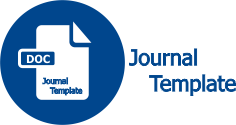Integration Artificial Intelligence in Video Media to Improve Student Motivation: Systematic Literature Review
DOI:
https://doi.org/10.24036/jppf.v11i2.33Keywords:
Physics Learning, Artificial Intelligence, Video Media, Concept Understanding, Literature ReviewAbstract
This study aims to systematically analyze the integration of Artificial Intelligence (AI) in video-based learning media and its impact on enhancing students’ learning motivation through a Systematic Literature Review (SLR) approach. Fifteen national and international journal articles published between 2015 and 2025 were systematically reviewed through the stages of identification, selection, eligibility, and synthesis. The analysis focused on the configuration of AI integration in educational videos, its contribution to students’ learning motivation, and the challenges of implementation in diverse educational contexts. The findings reveal that the integration of AI in video learning effectively increases students’ motivation, engagement, and interest by providing adaptive feedback, personalized content, and interactive learning experiences. Furthermore, AI-based videos promote self-regulated learning and enhance learners’ confidence in managing their study processes. However, successful implementation remains dependent on teachers’ digital competence, technological infrastructure, and ethical data management. Overall, integrating AI into video-based learning holds strong potential to create engaging, adaptive, and learner-centered environments that foster sustained learning motivation.
Downloads
References
Bitzenbauer, P. (2023). ChatGPT in physics education: A pilot study on easy-to-implement activities. Contemporary Educational Technology, 15(3), ep430.
Dahlan, Z., Sulthan, A. R., & Faridah, E. S. (2025). Active Learning as an innovative learning approach. AZKIA: Journal of Islamic Education in Asia, 2(1), 15-26.
Dahlkemper, M. N., et al. (2023). How do physics students evaluate artificial intelligence responses? Physical Review Physics Education Research, 19(2), 023105. https://doi.org/10.1103/PhysRevPhysEducRes.19.023105
Djaini, A., Permana, R. M., & Mahmudin, T. (2025). Analysis of MSMEs' Adaptive Strategy on the Integration of ChatGPT Technology as an Instrument for Increasing Sustainable Competitiveness and Accelerating Business Innovation in the Digital Transformation Era. Journal of Minfo Polgan, 14(1), 1015-1024.
Firmansyah, J., Rika, R., Nadiyyah, K., & Handayani, R. S. (2025). Improving the Competence of Banten Provincial High School Physics Teachers through Training on the Utilization of Artificial Intelligence (AI) in Learning. KALANDRA Journal of Community Service, 4(2), 60-76.
Kayal, A. (2024). Transformative pedagogy: A comprehensive framework for AI integration in education. In Explainable AI for education: Recent trends and challenges (pp. 247-270). Cham: Springer Nature Switzerland.
Khan, T., Mishra, P., Hashmi, K., Raza, S., Singh, M., Joshi, S., & Khan, A. R. (2024). Artificial Intelligence Assisted Teaching and Learning and Research of Environmental Sciences. In Artificial Intelligence: A Multidisciplinary Approach towards Teaching and Learning (pp. 80-114). Bentham Science Publishers.
Khasawneh, Y. J. A., & Khasawneh, M. A. S. (2024). Cognitive load analysis of adaptive learning technologies in special education classrooms: A quantitative approach. International Journal of Advanced and Applied Sciences, 11(12), 34-41.
Kulgemeyer, C., & Wittwer, J. (2023). Misconceptions in physics explainer videos and the illusion of understanding: An experimental study. International journal of science and mathematics education, 21(2), 417-437.
Liang, Y., Zou, D., Xie, H., & Wang, F. L. (2023). Exploring the potential of using ChatGPT in physics education. Smart Learning Environments, 10(1), 52.
Mayer, R. E. (2021). Multimedia learning (3rd ed.). Cambridge University Press.
Mazidah, L. N., & Suwarna, I. P. (2025). Meta-Analysis of Science Literacy Ability in Physics Subjects. Ideguru: Journal of Teacher Scientific Works, 10(1), 381-388.
Melati, M., Zainuddin, Z., & Lamote, H. (2024). The Effectiveness of Animation Video-Based Learning Media on Student Learning Outcomes at SMA Negeri 5 Kendari. Journal of Physics and Science Education (JPFS), 7(1), 42-50.
Nonthamand, P. (2024). Designing the video-based learning environments using workflow and scaffolding to enhance self-instructional video production ability. Contemporary Educational Technology, 16(4), ep522. https://doi.org/10.30935/cedtech/13040
Pellas, N. (2025). The impact of AI-generated instructional videos on problem-based learning in science teacher education. Education Sciences, 15(1), 102.
Rusnayati, H., & Ariantara, R. G. (2024). The Effectiveness of PhET Virtual Simulation in Solid Matter Physics Learning to Improve Concept Understanding of Prospective Physics Teachers. U-Teach: Journal Education of Young Physics Teacher, 5(1), 71-79.
Sabatini, J., Graesser, A. C., Hollander, J., & O'Reilly, T. (2023). A framework of literacy development and how AI can transform theory and practice. British Journal of Educational Technology, 54(5), 1174-1203.
Saputri, M., & Hamid, A. (2025). Training Utilization of Artificial Intelligence (AI) to Improve the Competence of Physics Teachers in Facilitating Learning in Langsa City. Journal of Community Service, 6(1), 249-256.
Simangungsong, R. (2025). Religious Learning Video Media in the Independent Learning Curriculum as a Media to Increase Student Interaction in Elementary School State 173637. Journal of Science and Education, 1(1), 9-17.
Sirnoorkar, A., Zollman, D., Laverty, J. T., Magana, A. J., Rebello, N. S., & Bryan, L. A. (2024). Student and AI responses to physics problems examined through the lenses of sensemaking and mechanistic reasoning. Computers and Education: Artificial Intelligence, 7, 100318.
Sweller, J. (2019). Cognitive load theory and educational design: Recent developments. Educational Psychology Review, 31(2), 263–284. https://doi.org/10.1007/s10648-019-09465-5
Timotheou, S., Miliou, O., Dimitriadis, Y., Sobrino, S. V., Giannoutsou, N., Cachia, R., ... & Ioannou, A. (2023). Impacts of digital technologies on education and factors influencing schools' digital capacity and transformation: A literature review. Education and information technologies, 28(6), 6695-6726.
Treve, M. (2024). Integrating Artificial Intelligence in Education: Impacts on Student Learning and Innovation. International Journal of Vocational Education and Training Research, 10(2), 61–69.
Utami, C. N., Risdianto, E., & Purwanto, A. (2025). Development of Digital Module on Kinematics Material Assisted by Artificial Intelligence Video Through MOOCs for Eleventh-Grade HIGH School Students. Sommaries: Physics Education Journal (KPEJ), 8(1), 50-63.
Wang, S., Wang, F., Zhu, Z., Wang, J., Tran, T., & Du, Z. (2024). Artificial intelligence in education: A systematic literature review. Expert Systems with Applications, 252, 124167.
Published
Issue
Section
License
Copyright (c) 2025 Shalehani, Pakhrur Razi, Hamdi, Hayyu Yumna (Author)

This work is licensed under a Creative Commons Attribution 4.0 International License.





